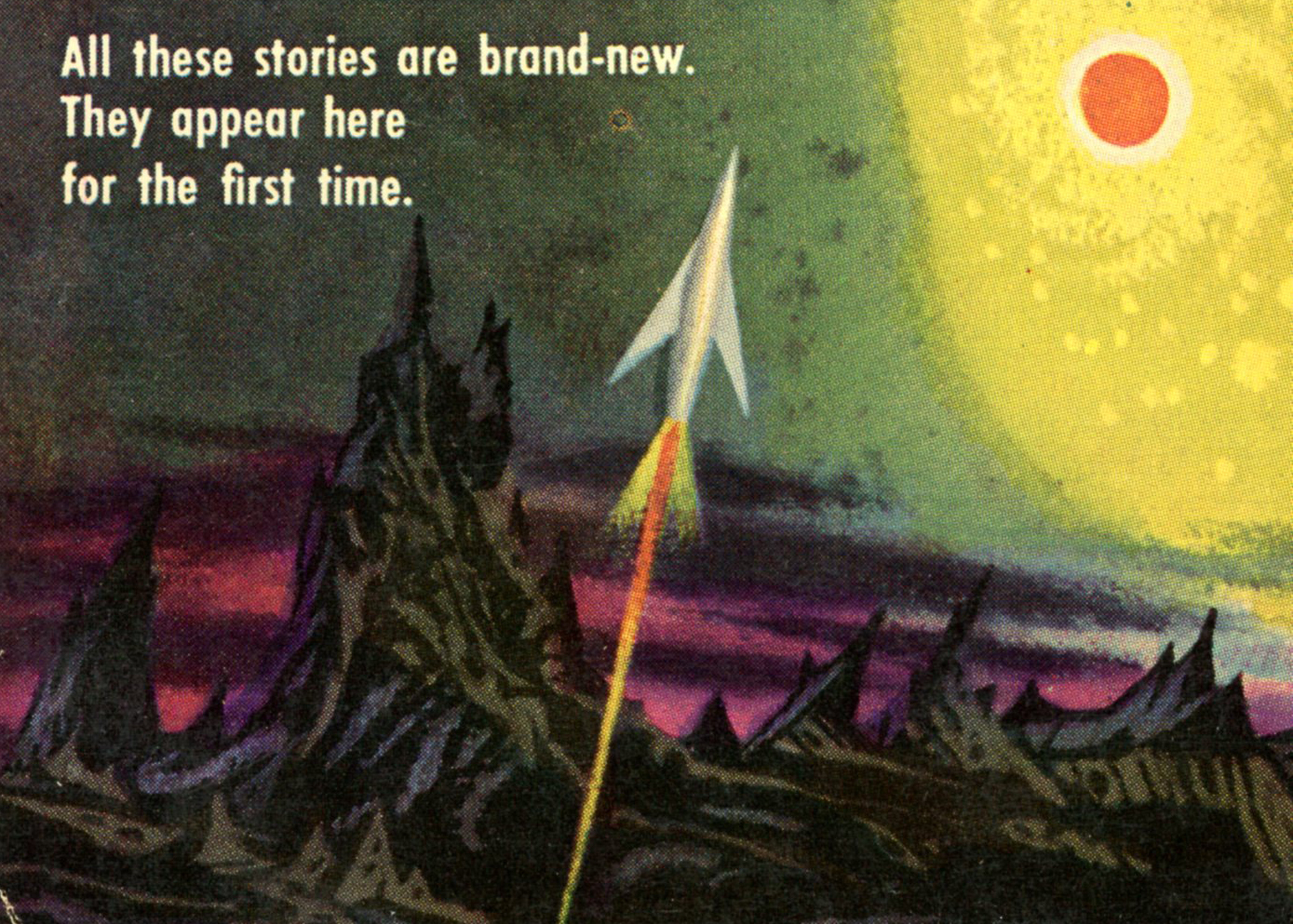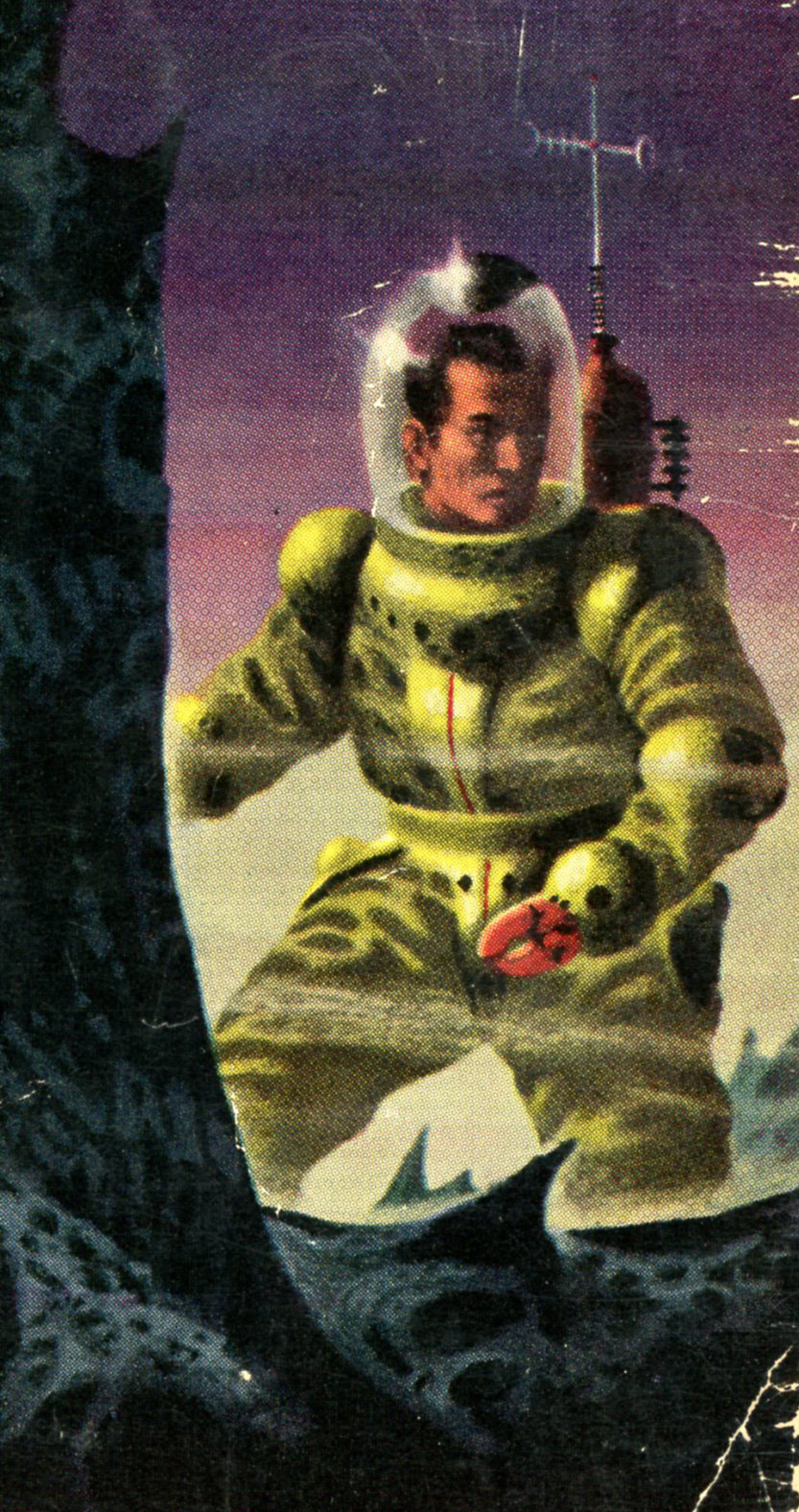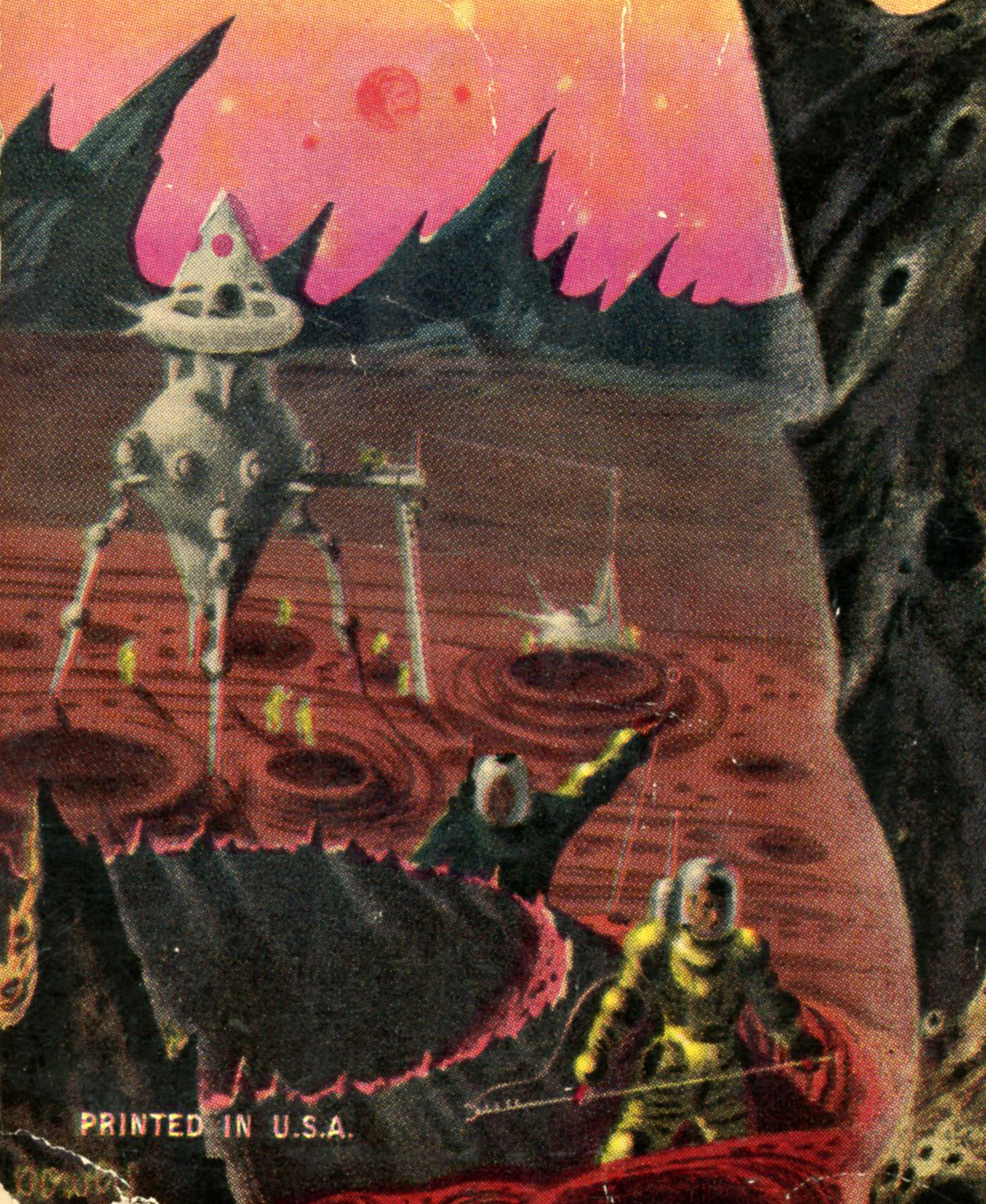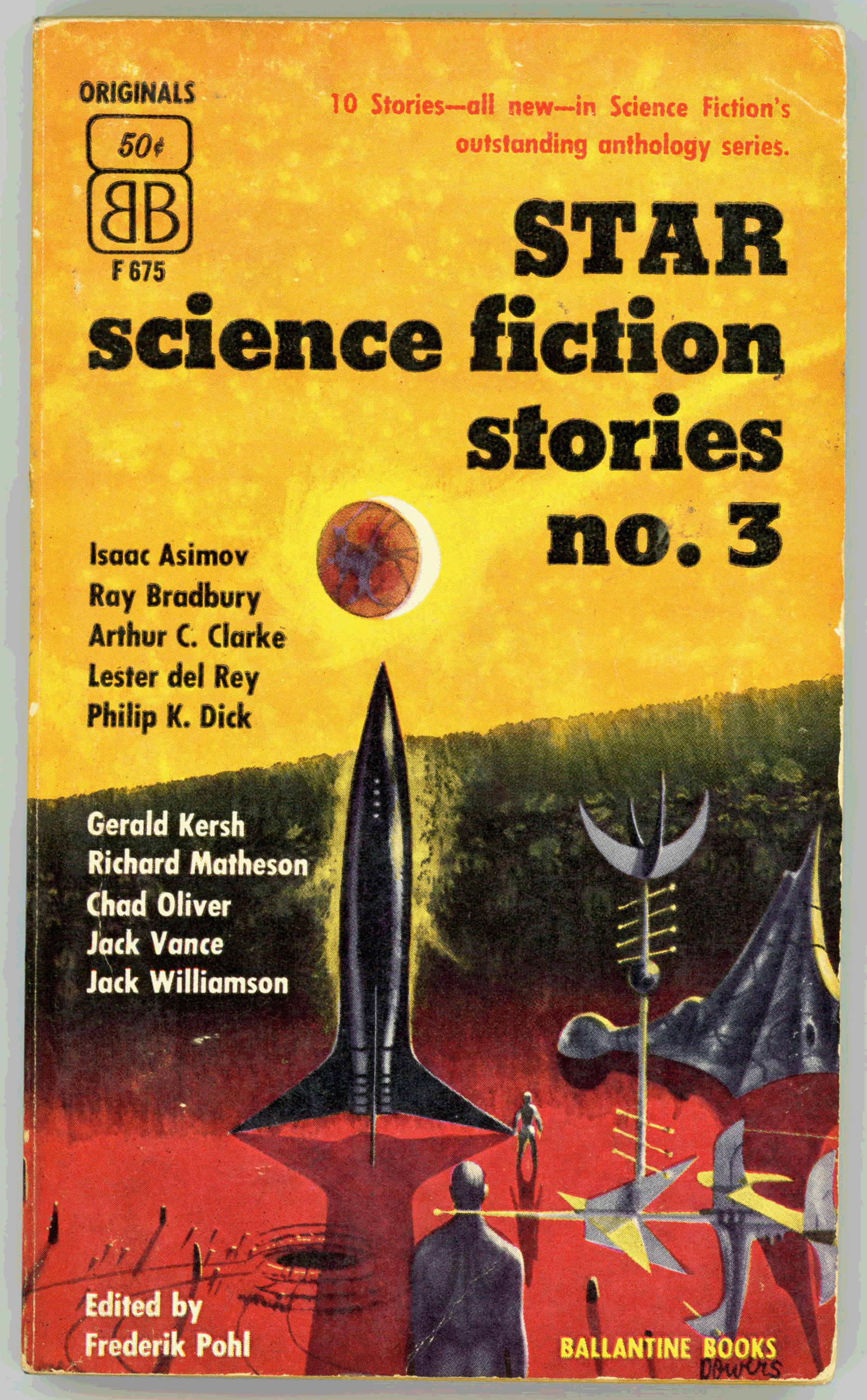In terms of color, detail, and symbolism, this is the best (well, seems so to me!) of Richard Powers’ Star Science Fiction covers.
The space explorer and landscape are similar to those appearing on the cover of Star Science Fiction Stories Number 1, but here, Powers has exaggerated aspects of that edition’s cover to great effect.
Like most of Powers’ representations of astronauts, his depiction of a space explorer is more symbolic than technical, the astronaut’s spacesuit having taken on the appearance of a jointed carapace, or, a bulbous suit of medieval armor, while the terrain is even more forbidding and jagged than in Star Science Fiction Stories Number 1. Note the use of shades of green and red in the spacesuit, horizon, and, alien horizon.
Here’s more detail from the back cover. Again, note the emphasis on shapes and colors, rather than detailed presentation of technology
Taken as a whole, the presence of a solitary astronaut and departing spaceship suggest a story in and of itself.
Disappearing Act, by Alfred Bester
The Clinic, by Theodore Sturgeon
The Congruent People, by A.J. Budrys
Clinical Factor, by Hal Clement
It’s A Good Life, by Jerome Bixby
A Pound of Cure, by Lester del Rey
The Purple Fields, by Robert Crane
F Y I, by James Blish
Conquest, by Anthony Boucher
Hormones, by Fletcher Pratt
The Odor of Thought, by Robert Sheckley
The Happiest Creature, by Jack Williamson
The Remorseful, by Cyril M. Kornbluth
Friend of the Family, by Richard Wilson
102 6/22/17 10/1/18









